B
uddhist temple precincts were built originally on large properties. A pagoda was a safe repository for important documents and ephemeral goods. Fires, floods, bombings, and other disasters destroyed most of them. The structures were made of wood and faced constant challenges from lightning strikes or high winds.
I was surprised to learn that these “ancient” buildings were rebuilt many times. Rebuilding is accomplished through funding by feudal clans, wealthy patrons, community efforts, local, national, or even international contributions.
Preserving the past
A national program of archiving information about construction techniques aids in reproducing structures. Earthquakes, salty sea air, tsunamis, typhoons, intentional destruction from wars, rebellions and fire factor in the planning. High replacement costs and conservation of precious materials may result in a smaller footprint (pun intended) of temples.
Preparing for the future
Importantly, the human factor, labor skills, and trades required to execute these plans were passed down and preserved. Many rebuilds are routinely scheduled so that the construction techniques can be practiced. As a result, “newer” temples are purposely and faithfully replicated. It is difficult, sometimes, to tell if a building was built in the 8th or the 20th century.
Opportunities to use modern techniques or materials not available hundreds of years ago ensure that sutras, fragile relics, statues, artwork, paintings and historical papers are safely preserved and stored. More times than not, old time-tested techniques are still used today.
80 Kokubun-ji
State Temple of Sanuki Province
Kokubun-ji is the name of state sponsored temples in Japan. There are four on the Shikoku pilgrimage path. This one in Takamatsu City is called Sanuki Kokubun-ji after the former name for Kagawa prefecture.
Like many temples in Japan, almost all the buildings on the precinct were burned down or destroyed. Not surprisingly, pagodas are most susceptible to lightning strikes, fire, high winds, and air strikes during war.
Now the entire temple 80 precinct is the only designated Special Historic Site in Shikoku. There are many valuable foundations stones on the grounds showing its layout when it was founded in 741.

Mini pilgrimage
After passing through the temple gate, the path is flanked on both sides by a mini Shikoku pilgrimage modeled after the principal images of every temple on the henro path.
These were originally found in a nearby village and moved to the precincts in the 1920s.
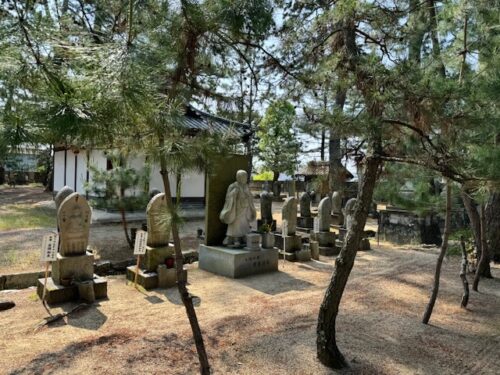
Eighty-eight stone statues modeled after the principal images of every temple on the Shikoku Henro pilgrimage
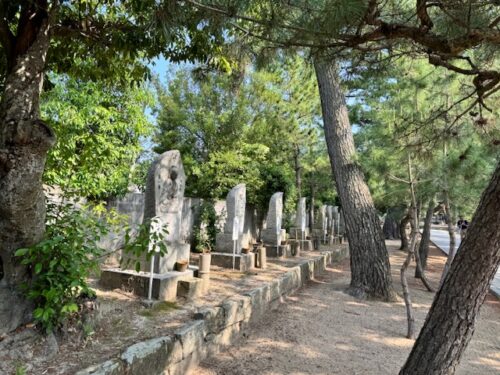

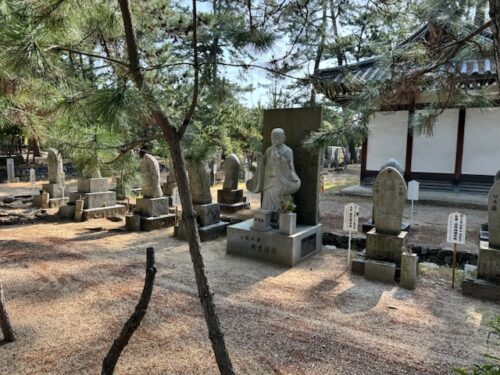
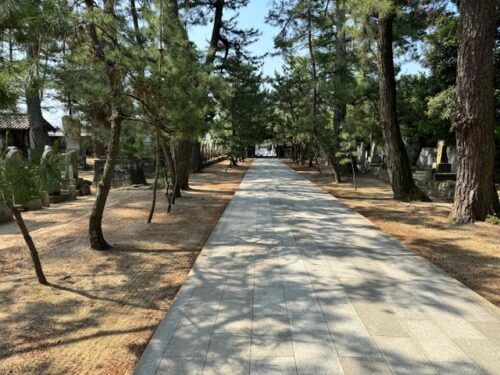
Promenade to the main hall.
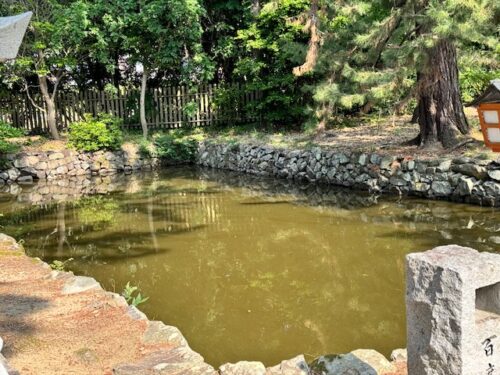
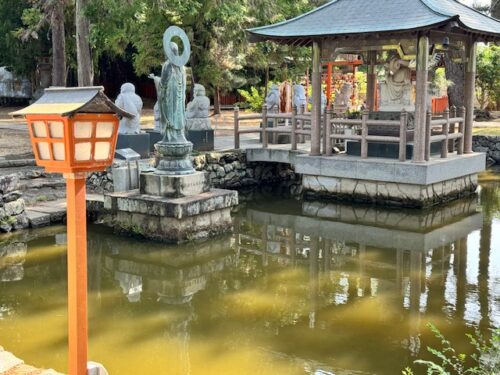
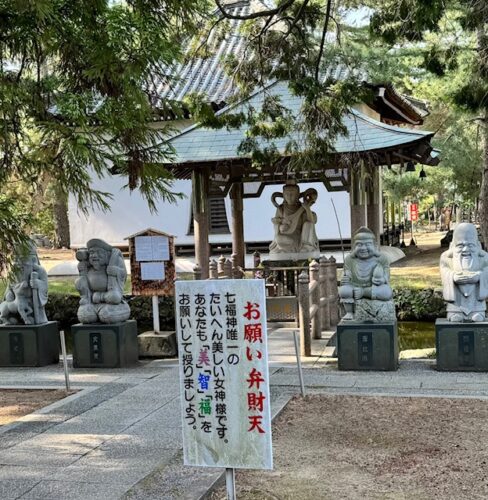
Ponds enhance the central part of the approach. Statues of the Seven Lucky Gods are here. Benzaiten, is seated in a covered prime spot. She is the goddess of eloquence, good fortune, water, love, and the arts.
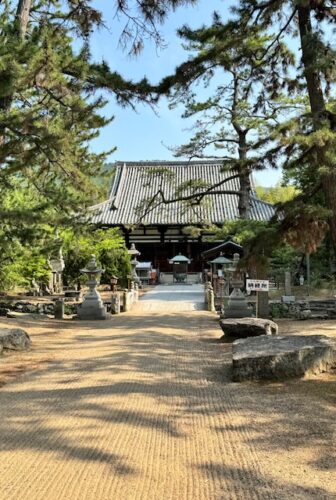
Main hall.
The large stones lining the promenade are original foundation stones for the main hall.
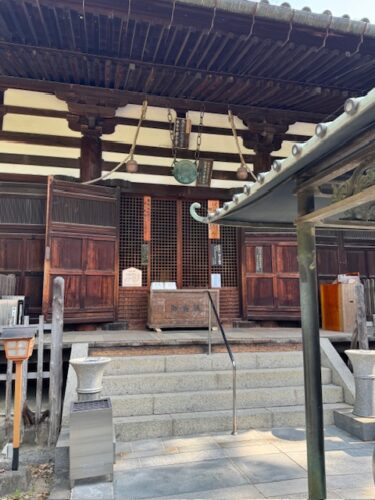
Close up.

Temple bell.
This is the oldest temple bell in Kagawa prefecture. It dates from the Heian period when the temple was built around 741.
There are many tales about the bell including one of a feudal lord who stole it from the temple. Trouble began when he became sick and the bell refused to ring. Not long after, it was returned to its original location.
Two-storied pagoda
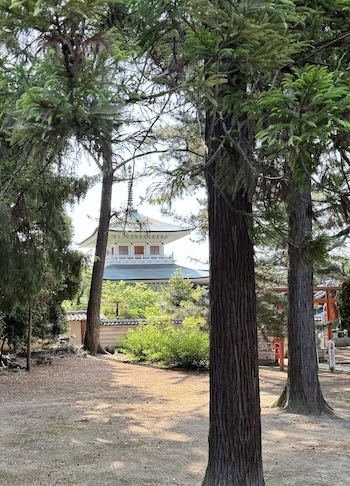
This is a distinctive white pagoda, which is the Daishi Hall and temple office.
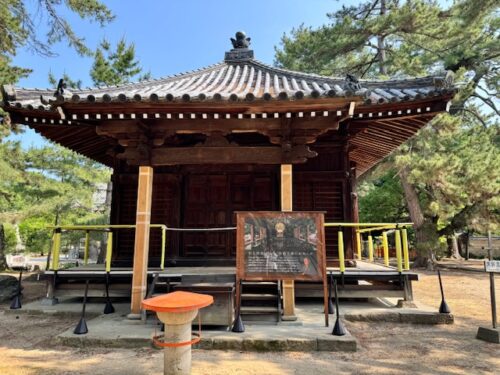
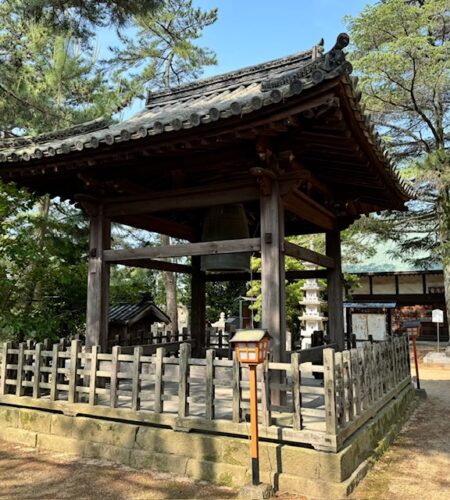
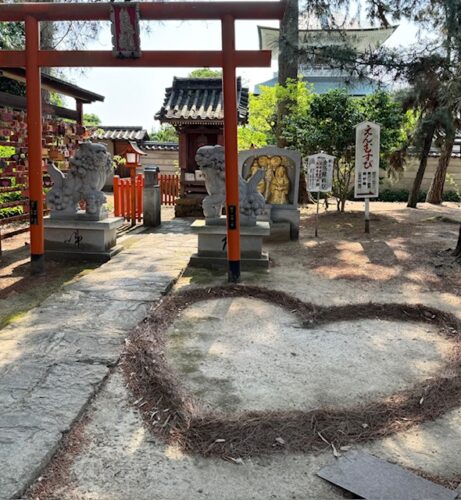
Sacred space.
Seven-storied pagoda
The pagoda was used to store sutras, historical writings, and documents..
Ruins of the Kondo (main hall) and along the promenade leading to the hall and the seven-storied pagoda are near the temple gate.
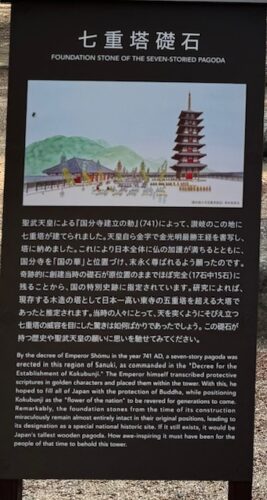
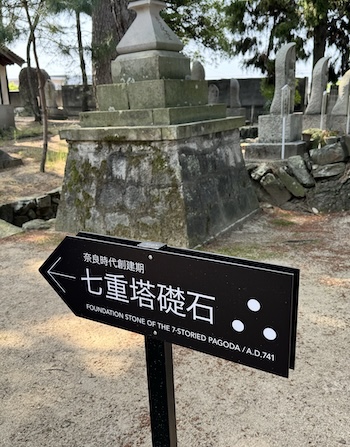
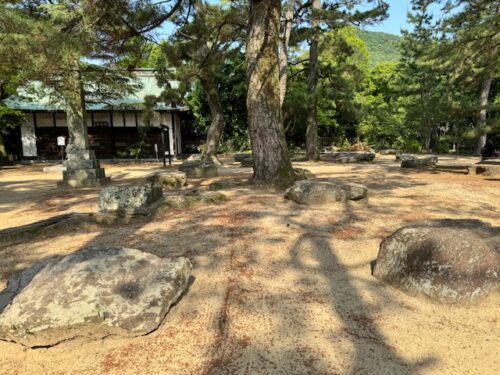
There are fifteen foundation stones of the pagoda. They were found at nearly the exact location in which they were laid. The foundation stone is shaped like a large, flat pancake. On top is a small rustic mockup of the pagoda (seven stacked stones).
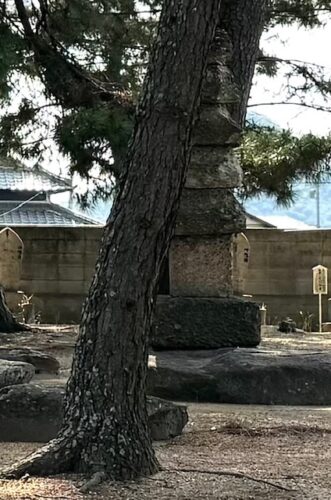
The foundation stone and mock stone pagoda are behind the pine tree.
The “pagoda” stone has been studied to determine if the design was earthquake proof. Studies show that it was. Its central pillar construction technique (featuring a cut mortise) was used on several modern-day structures and buildings in Japan and the United States.

If the pagoda had survived, it would be larger than the five-storied pagoda of To-ji Temple in Kyoto.
My question, the one I will ponder for a while is this: why wasn’t the pagoda rebuilt?
More principal temple images
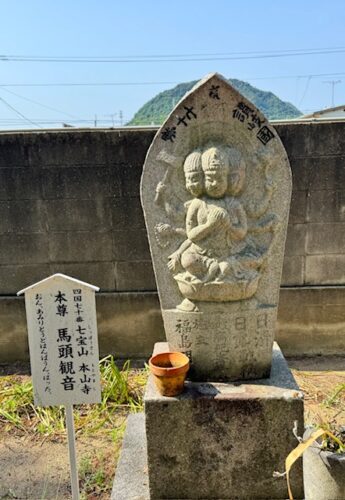
Horse Head Kannon.

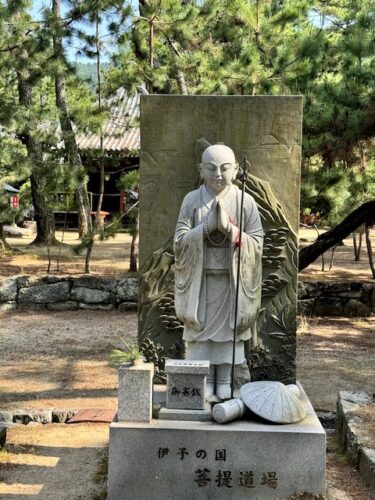
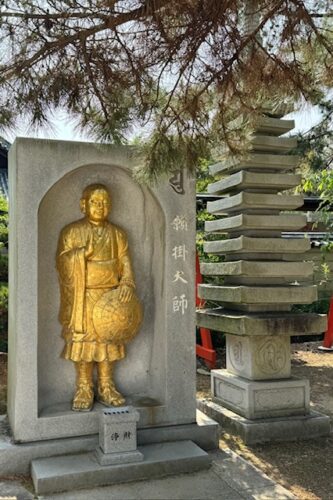
Statue of Kukai covered in gold leaf.

Fiery Fudo Myoo.
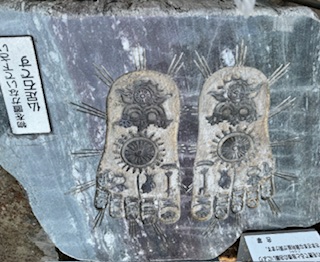
Buddha’s footprints.
Legacy of the seven-storied pagoda

Sanuki Kokubun-ji temple was a fascinating place to land on the Shikoku 88 pilgrimage! I learned so much about this special piece of Japanese history. The pagoda no longer exists. However, techniques used to construct it are employed today.
A museum in Takamatsu is dedicated to preserving the history of the temple, pagoda, and its artifacts.
I spent a lot of time here. Now I have to find the guesthouse where I am staying for the night!
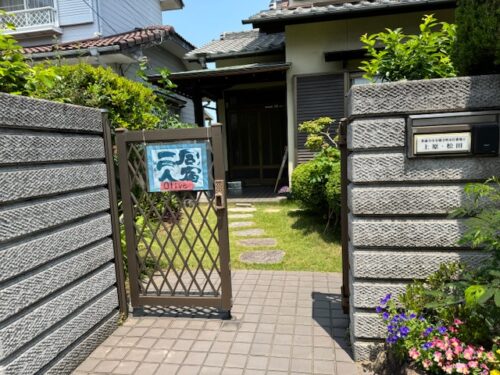


Nice!
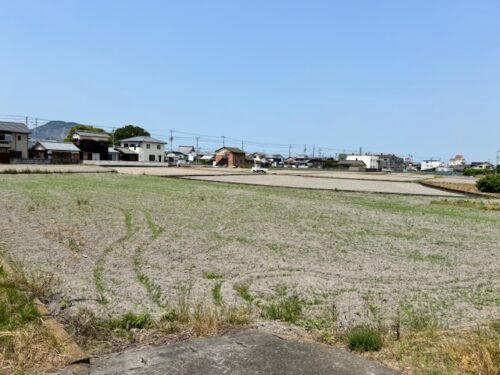
It was a good day…. and night in the neighborhood.
See you next time.
Baadaye and Mata Ne (またね)
Shirley J ♥️
This and several posts this summer will chronicle my pilgrimage in Japan where I am walking the 1200 kilometer-long Shikoku 88 temple pilgrimage. Read my announcement here.

T80
